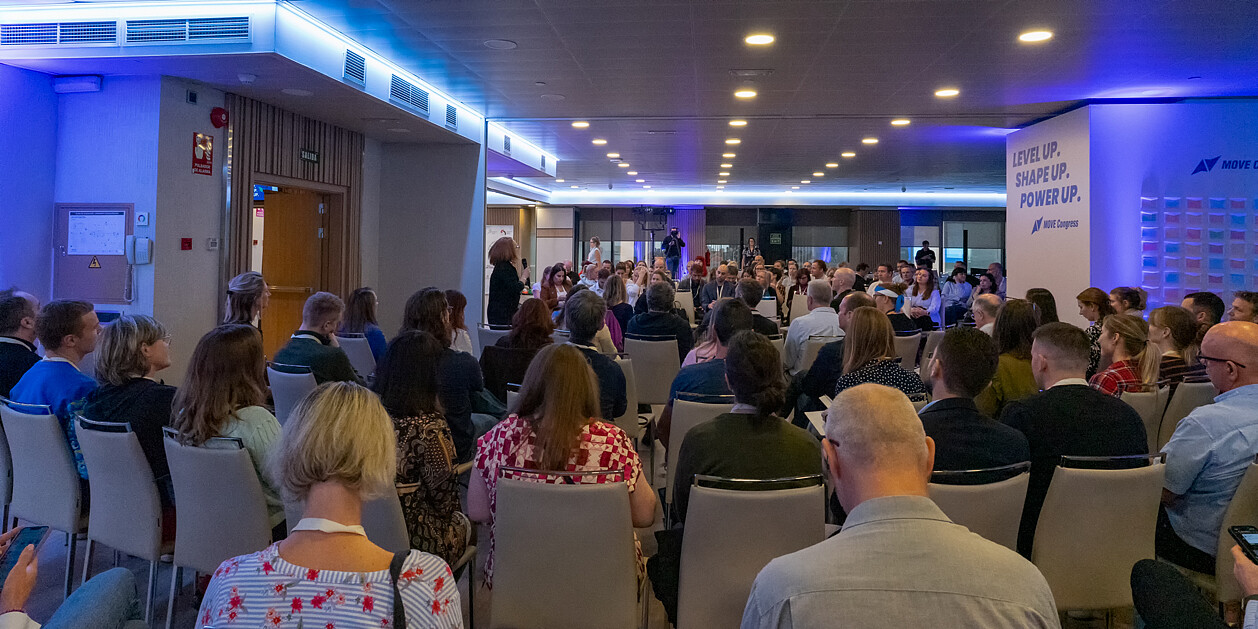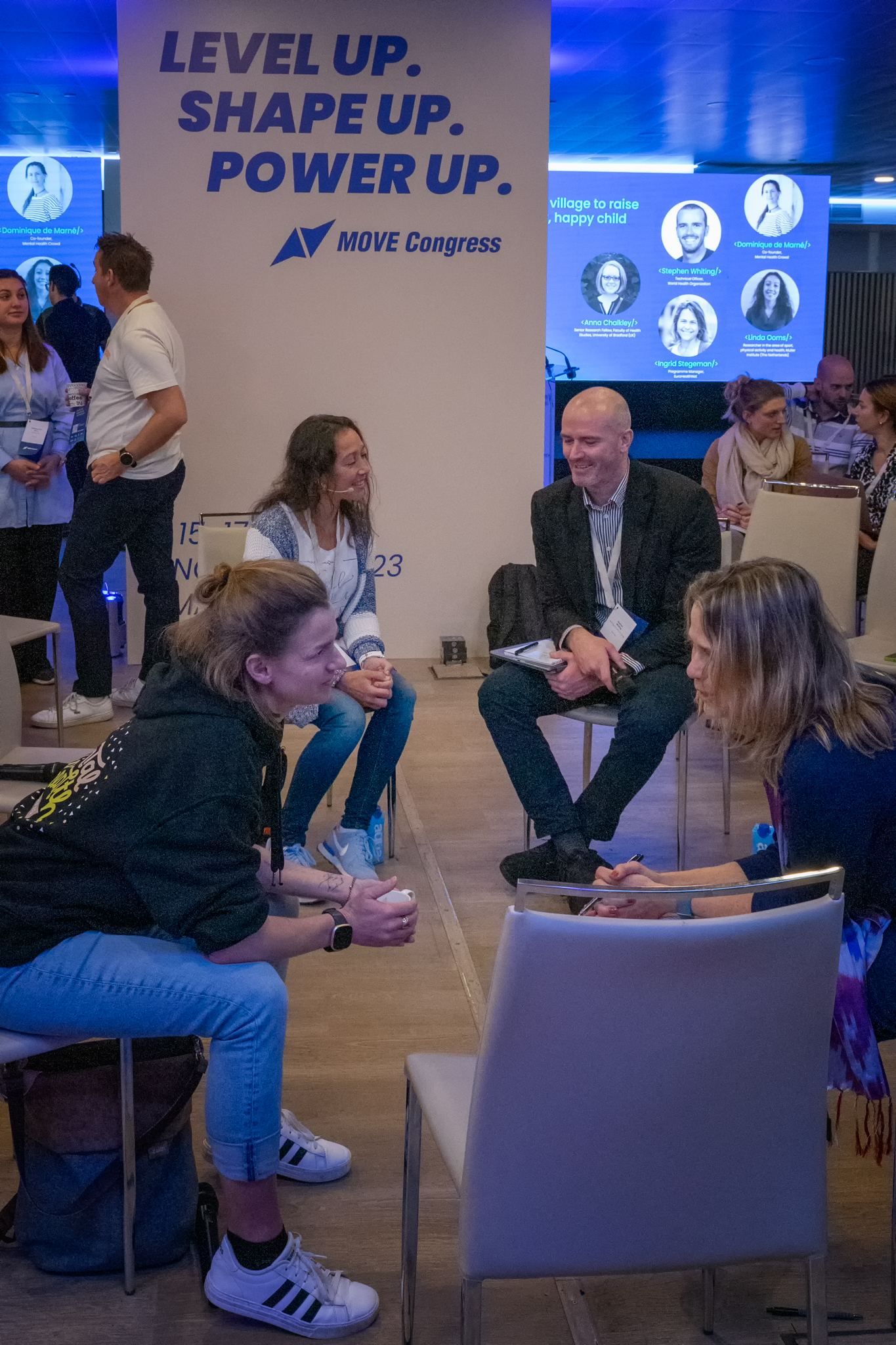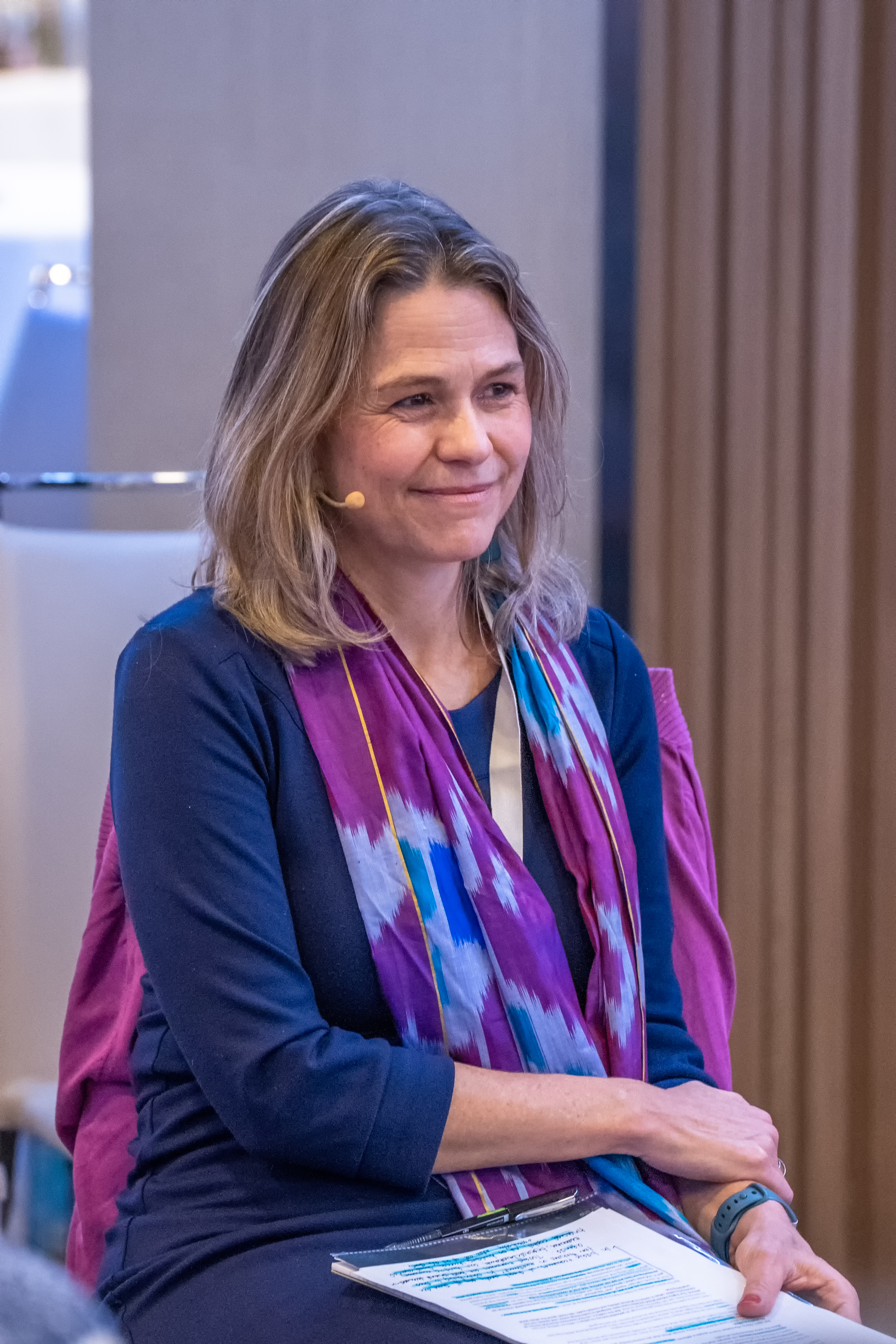It takes a village to raise a child – an African proverb that could help us adopt a more child-centred approach
17/11/2023

The African proverb “it takes a village to raise a child” provided a framework for the MOVE Congress panel discussion on 16 November that added the keywords “health and happy” to the title. Both the original and extended phrase encapsulate the idea that a child’s wellbeing and development are influenced by a community that is much broader than their immediate family. This concept emphasises the collective responsibility of society in supporting children to grow into happy, healthy individuals.
The village represents various influences such as parents, the extended family, educators, community leaders, and institutions that all influence a child’s upbringing by providing guidance, nurturing, education, and a supportive environment. It underscores the significance of collaboration and cooperation among individuals and institutions in shaping a child’s future. However, in today’s fast-paced, digitally driven society, the perception of a ‘village’ has transformed considerably. So, how can we adapt this concept to support the upbringing of children in the contemporary landscape?

Photo: Panellists warming up: front left Dominique De Marné and Ingrid Stegeman,
back: Linda Ooms and Stephen Whiting elaborating the concept of the "village"
All of us have an important role to play: we all are interested in helping children to be healthy and happy and to support this concept, the panel implemented the so-called “fishbowl” approach, with three unassigned chairs allowing audience members to join the panel at any time to ask questions, reflect or share their remarks.
The discussion was moderated by Dr Anna Chalkley, Head of the European HEPA Network and Senior Researcher at the University of Bradford. Anna was joined by four panellists, the first keynote speaker of the MOVE Congress 2023, Dominique de Marné (the Mental Health Visionary, co-founder and CEO of Mental Health Crowd), Ingrid Stegeman (Programme Manager at EuroHealthNet), Linda Ooms (Researcher in the area of sport, physical activity and health at the Mulier Institute) and Stephen Whiting (Technical Officer at the European Office of the World Health Organization).
“One of the best things that we can do throughout life is to be physically active,” Dr Chalkley said to kick off the conversation. “But how do you see the roles of different settings and the role of people within those settings (like sports, health, community settings but also the home setting)? How can we mobilise these settings and people to contribute to the agenda?”
Indeed, these are a really broad questions. Even though the WHO published guidelines on the recommended amount and intensity of physical activity for different age groups, the reality is not a fairytale. Some settings like schools, in some cases even parents, might not know exactly what their role is in the ‘village’.
“We know that kids’ physical inactivity is too great an issue, the challenge is too big for one sector, for one stakeholder to tackle it alone. For meaningful change we have to collaborate, we have to work in partnership. There is no other option,” Chalkley said, continuing, “how do we ensure cooperation between partners? Because quite often research speaks a different language to policy-makers, to practice. How does that actually work well in practice?”
“The behaviour change wheel (by Susan Michie) would be a good option here, because essentially we are trying to get other settings to change their behaviours, Ingrid Stegeman from EuroHealthNet added.

Photo: Ingrid Stegeman
“Of course, a good, but not so easy, approach is to find the motivation in each sector. Why do they want to invest in the collective responsibility of society in supporting children to grow into happy, healthy individuals? Then there is capability of the sectors concerned: even if you find motivation, you have to know the ‘how to do it’ and then embed this structurally. Lastly, there is the opportunity aspect: our societies are really structured, which makes a lot of things easy and convenient, and not necessarily to improve our physical and mental health. Along with this we always have to change into the language of who we are talking to and show them what’s in it for them, and why.”
“We have engineered physical activity out of our societies,” was a comment coming from the Novo Nordisk Global Project Lead of Childhood Obesity Prevention and Physical Activity Promotion, Mads Rosenkilde Larsen, from Denmark, who reinforcing the need for a multisectoral cooperation to tackle the inactivity trends in youth. He also presented the thought that not all, but some of the challenges can be tackled through public-private partnerships. The other experts agreed that there is a huge need for evidence to support the partnerships – evidence that needs to be monitored and evaluated. If it makes a meaningful change, then it needs to be scaled up.
Adapting the ‘village’ concept in today’s world involves fostering a collaborative, supportive environment where diverse voices (including children’s voices) and resources unite to the benefit of children.
“How do we centre the young person’s voice and give them agency?” Greg Dryer, the co-founder of miMove, raised the seemingly obvious question. “I hear the threats that increased screen time may pose, but technology also offers unprecedented opportunities. If the tech reflects the values that we’d want in a village, so that we’ve got a virtual village as well as a real-life village, then we have got powerful scalable ways of supporting our children.”
There is a vibrant conversation around the world about the benefits of physical activity. But are we only focusing on narrow benefits? And are they presented to children in an effective way?
“Are they medicinal benefits? Healthified benefits? Most people who move, especially young people, don’t move because [they know] it’s going to delay the onset of coronary heart disease or NCDs. That doesn’t excite 13-year-old kids. I really worry about the ‘healthification’ of the conversation which removes the young person’s voice and drops down the scientific community’s voice onto the young person and by so doing removes agency. Health is an outcome of moving more, probably not a driver of moving more,” Dryer emphaisised.
Identifying the different sectors/settings that are or should be involved in the “village” can relieve the pressure on every single other setting involved. Experts eventually agreed that a child doesn’t need to have all settings to be perfect. That would only happen in a utopic, ideal world. Settings equal out eventually what one sector may lack.
“We know from studies that just one person around the kid can make the difference concerning resilience and the whole approach they are having on life. Maybe it is not ideal at home, or at school, but maybe there is one setting where things are a bit brighter. And this is a power that we as organisations in the grassroots sector have. We can be that one setting where we cannot erase all the other negative aspects from the other settings, but we can level it out and be the safe environment where kids feel seen, heard and loved,” Dominique de Marné added.
Lastly, looking back on the entire discussion where a total of 10 audience members went in and out of the “fishbowl” panel, Bruno Helman, project coordinator at International Diabetes Foundation, added that he “would like to challenge and invite everyone to open the door and have a chair free by the table for those people and I’m sure we all will be amazed by the level of experience and knowledge and contribution those people can bring. It doesn’t matter how creative, amazing, outstanding impactful grassroots interventions are, we cannot have a life-long lasting impact without public policies and for that those that are directly impacted (either people living with chronic conditions, or even children) are really powerful spokespersons.”
Ultimately, the adaptation of the ‘village’ concept in today’s world is about fostering a culture of collective responsibility with the involvement of all parties concerned, including the child. It involves recognising the importance of diverse influences and actively engaging with the broader community to provide a nurturing environment. As we navigate the complexities of modern life, reimagining the ‘village’ as a dynamic, inclusive, and interconnected network allows us to create a supportive ecosystem where every child can thrive, grow, and contribute positively to society. It indeed takes a village, albeit an evolved and interconnected one with all participants aware of their responsibilities to raise a happy, healthy and loved child in the 21st century.
Now you can watch the session on demand on our YouTube channel - watch below.
Posted on 17/11/2023 by Anita Király, ISCA

